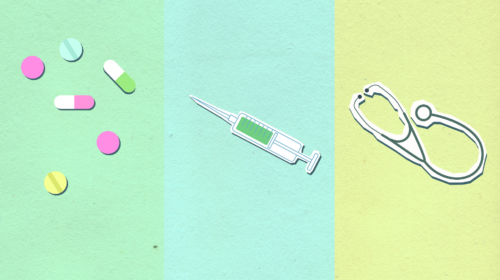Halfway houses are transitional homes for patients undergoing mental health, drug, and alcohol recovery. These houses are conceptually located “halfway” between the rigid, large-scale psychiatric hospital and the small family home environments the patients would go to once discharged.[1]
There are halfway houses in every state in the US. If you are suffering and in need of support, you can choose from one of nearly 18,000 recovery homes in the US.[2]
While the halfway house model began in the US in the 1960s, it began to proliferate worldwide in the 1970s. There was a growing need to abandon the universal medical model, in which patients are considered ill all of the time while in the hospital. Instead, it sought to offer an alternative: A functional environment without imprisonment.
There are two functional models that often co-exist inside a halfway house: The Family and the Social Models:[3]
- Family Model: Transitional rules originating from repeated interactions among individuals who live in the community.
- Social Model: Emphasizes peer support for sobriety and shared responsibilities in managing house operations/maintenance.[4]
What Is The Purpose of A Halfway House?
The purpose of a halfway house is to provide transitional housing for people who need it most. The focus was to separate the user from their previous substance-abusing environment so that they could recover in a sober, supportive environment.
Halfway houses are a community-based treatment center wherein the residents learn life skills with an ingrained social support system. While they may come to the home as “patients,” upon entering, they take the title of “resident.” The decision process for important issues in the house is a democratic one.[5]
Sometimes called “sober living houses,” residents of halfway houses are usually expected to undergo a treatment program for their substance abuse addiction or any other addictions that have negatively impacted their lives.
Are Halfway Houses and Sober Living Homes the Same Thing?
Generally, yes. These words are sometimes used interchangeably. “Sober living” is a recovery-specific term, whereas “halfway houses” can also house parolees transitioning out of the criminal justice system. However, those who are transitioning out of a correctional facility will likely be required to be sober, so the purpose is similar.
However, there are a few distinctions:
Sober-living homes are usually privately owned and expect residents to pay for rent and utilities just like everywhere else. No funding disruptions usually occur, provided all the residents remain current on their rent.
- Residents can remain in the house for as long as they please, provided they abide by the democratically selected rules. These usually include things like curfew, gainful employment during daytime hours, and (sometimes) rehab program attendance.
- In-house residents generally assume the roles and responsibilities of staff members.
Halfway houses are usually publicly funded by treatment centers or the government and do not expect residents to cover all living expenses. Funding disruptions could occur at any time, depending on budget cuts for whichever entity owns the house.
- Residents have a limited time they can live in the house, generally for up to a year. While they are living in the house, they must attend an addiction recovery program or have recently attended one.
- Staff members are from the general public, live off-campus, and are paid by the entity that owns the house.
Who Is Eligible to Go to a Recovery Residence?
Important: if you are in the midst of an active drug addiction, a sober living home is not the best fit for you. Seek treatment immediately.
A recovery residence (sober living home) provides a safe space with an ingrained social support system for post-detox patients following inpatient treatment but during outpatient treatment. This means that you’ve already completed detoxing from whatever your addiction was and are now in the early stages of sobriety.
Rather than housing people in the throes of addiction, sober living homes provide a space for people seeking to establish a new trajectory for their lives, which includes a practical application to sobriety.
What Are The Typical Rules of a Recovery House?

Do you think you would thrive in a recovery house? That’s great news.
All of the social perks of living in a community come with their fair share of expectations. As it was when we were children, recovery houses expect their residents to take an active part in maintaining the house. House chores can include:
- Yardwork
- Cleaning and sanitization
- Repair and maintenance
- Dishes
- Laundry
- Etc
Other expectations can include rules on curfew, drug testing, cooperation, accommodating a sober living environment, sober house (no drugs), house meetings, and check-ins with staff members.
Sober living houses will generally do check-ins with fellow residents who have assumed accountability roles, whereas halfway houses do check-ins with paid staff members who live off-campus.
What Happens After You Leave a Sober Living Facility?
The goal of sober living facilities is to integrate you back into the community as you live out your sobriety every day. However long you decide to stay is up to you.
“Aftercare” is what happens both during and after your initial rehab program. While you’re in rehab, your treatment team is working to make sure you have the skills you need to be successful once you leave.
Your stay in a sober living facility is part of your aftercare. During their stay, many residents choose to be part of 12-step programs designed to help them navigate sobriety and recovery. Ultimately, it’s a lifetime commitment. Here are some 12-step groups to look into:
- Alcoholics Anonymous (AA)
- Adult Children of Alcoholics (ACA)
- Cocaine Anonymous (CA)
- Crystal Meth Anonymous (CMA)
- Heroin Anonymous (HA)
- Marijuana Anonymous (MA)
- Narcotics Anonymous (NA)
- Dual Diagnosis Anonymous (DDA)

























